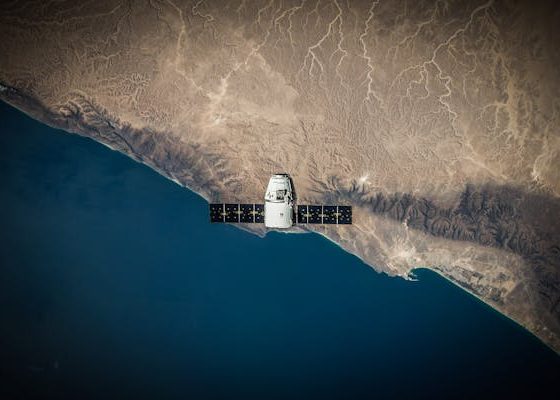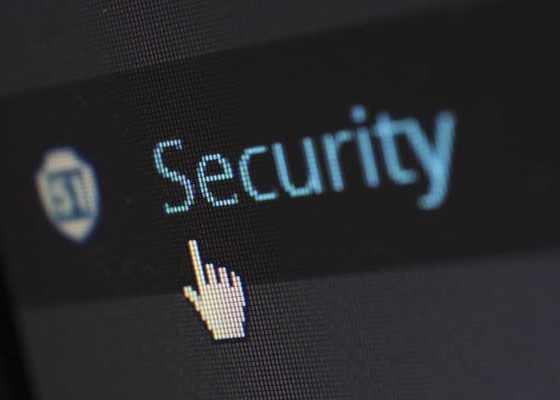
The advent of 5G technology marks a significant leap in the realm of telecommunications, bringing forth a myriad of possibilities and applications across various sectors. As the fifth generation of wireless technology, 5G offers unprecedented speed, lower latency, and enhanced connectivity, laying the foundation for a new era of technological advancements. This article delves into the diverse applications of 5G technology, highlighting how it is poised to revolutionize industries, enhance user experiences, and drive innovation.
Enhancing Mobile Connectivity
The most immediate and apparent application of 5G technology lies in enhancing mobile connectivity. With data speeds up to 100 times faster than 4G, 5G enables seamless streaming of high-definition content, real-time video conferencing, and faster downloads and uploads. This enhanced connectivity is crucial for the proliferation of mobile applications that demand high bandwidth and low latency, such as augmented reality (AR) and virtual reality (VR) applications.
Internet of Things (IoT)
One of the most significant applications of 5G technology is its ability to support the burgeoning Internet of Things (IoT). IoT encompasses a vast network of interconnected devices that communicate and share data with each other. From smart home devices to industrial sensors, the potential of IoT is vast. However, the true realization of IoT’s potential depends on a robust and reliable network, which 5G provides. With its low latency and high capacity, 5G can handle the massive number of connected devices, enabling smart cities, efficient logistics, and advanced healthcare solutions.
Smart Cities
5G technology is a cornerstone in the development of smart cities. By providing a reliable and high-speed network, 5G enables the integration of various urban systems and services. Smart traffic management systems can communicate in real time, reducing congestion and improving traffic flow. Environmental sensors can monitor air quality and provide data for better urban planning. Public safety is also enhanced through connected surveillance systems and emergency response coordination. Overall, 5G technology facilitates a more efficient, sustainable, and livable urban environment.
Healthcare and Telemedicine
The healthcare sector stands to benefit immensely from the applications of 5G technology. Telemedicine, which gained prominence during the COVID-19 pandemic, relies on robust connectivity to deliver remote healthcare services. With 5G, doctors can conduct high-definition video consultations, access real-time patient data, and even perform remote surgeries using robotic systems. Wearable health devices can continuously monitor vital signs and transmit data to healthcare providers, enabling proactive and preventive care. This seamless connectivity can lead to improved patient outcomes, reduced healthcare costs, and increased access to medical services, especially in remote areas.
Autonomous Vehicles
The automotive industry is undergoing a transformation with the development of autonomous vehicles, and 5G technology plays a pivotal role in this evolution. Autonomous vehicles require real-time communication with other vehicles, infrastructure, and cloud systems to navigate safely and efficiently. The low latency and high reliability of 5G enable these vehicles to process and respond to data instantaneously. This connectivity ensures that autonomous vehicles can make split-second decisions, avoid collisions, and optimize routes, ultimately leading to safer and more efficient transportation systems.
Industrial Automation
The applications of 5G technology extend to industrial automation, revolutionizing manufacturing processes and supply chain management. In smart factories, machines and robots can communicate with each other and with central control systems in real time. This connectivity enables predictive maintenance, where machines can anticipate failures and request maintenance before breakdowns occur, reducing downtime and increasing productivity. Additionally, 5G supports the deployment of drones for inventory management and inspection tasks, streamlining operations and reducing labor costs.
Augmented and Virtual Reality
Augmented reality (AR) and virtual reality (VR) technologies have immense potential across various sectors, from entertainment to education and training. However, these technologies demand high bandwidth and low latency to deliver immersive experiences. 5G technology meets these requirements, enabling AR and VR applications to thrive. In entertainment, users can enjoy high-quality, interactive experiences without lag. In education, AR and VR can provide immersive learning environments, enhancing student engagement and comprehension. In training, these technologies can simulate real-world scenarios, allowing professionals to practice and hone their skills in a safe and controlled environment.
Gaming
The gaming industry is set to experience a significant boost with the widespread adoption of 5G technology. Online gaming, especially cloud gaming, requires low latency and high-speed connectivity to deliver a seamless experience. 5G enables gamers to play graphically intensive games without the need for high-end hardware, as the processing is done in the cloud. This democratizes access to high-quality gaming experiences, allowing more people to participate. Additionally, 5G enhances multiplayer gaming by reducing lag and enabling real-time interactions, creating more immersive and competitive gaming environments.
Agriculture
Agriculture is another sector that stands to benefit from the applications of 5G technology. Precision agriculture relies on data collected from various sensors and devices to optimize farming practices. With 5G, farmers can deploy a multitude of sensors across their fields to monitor soil conditions, crop health, and weather patterns in real time. Drones equipped with cameras and sensors can provide aerial imagery and data, allowing farmers to make informed decisions about irrigation, fertilization, and pest control. This data-driven approach enhances crop yields, reduces resource usage, and promotes sustainable farming practices.
Energy and Utilities
The energy and utilities sector is poised for transformation with the integration of 5G technology. Smart grids, which rely on real-time data to manage electricity distribution, can operate more efficiently with 5G connectivity. Energy providers can monitor and control energy consumption in real time, reducing wastage and optimizing resource allocation. Additionally, 5G supports the deployment of smart meters, which provide consumers with detailed insights into their energy usage, promoting energy conservation. In the utilities sector, 5G enables remote monitoring and maintenance of infrastructure, reducing operational costs and improving service reliability.
Retail and E-commerce
The retail and e-commerce industries are experiencing a shift towards digital and personalized shopping experiences, driven by the applications of 5G technology. With high-speed connectivity, retailers can offer augmented reality (AR) applications that allow customers to virtually try on products, enhancing the online shopping experience. In physical stores, 5G supports the deployment of smart shelves and inventory management systems, ensuring that products are always in stock and readily available. Additionally, 5G enables seamless mobile payments and personalized marketing, providing customers with tailored offers and recommendations based on their preferences and shopping behavior.
Public Safety and Emergency Services
Public safety and emergency services can leverage the capabilities of 5G technology to enhance their operations and response times. First responders can access real-time video feeds and data from the scene of an incident, enabling them to assess the situation and make informed decisions quickly. Drones equipped with cameras and sensors can provide aerial views and gather critical information during emergencies, such as natural disasters or accidents. Additionally, 5G enables the deployment of connected wearables for emergency personnel, allowing continuous monitoring of their vital signs and ensuring their safety during operations.
Education and Remote Learning
The education sector has witnessed a significant shift towards digital and remote learning, accelerated by the COVID-19 pandemic. 5G technology plays a crucial role in enhancing these learning experiences. With high-speed connectivity, students can access high-definition video lectures, participate in virtual classrooms, and collaborate with peers and teachers in real time. Augmented reality (AR) and virtual reality (VR) applications can create immersive learning environments, enabling students to explore complex concepts and scenarios interactively. Furthermore, 5G supports the deployment of connected devices and educational tools, ensuring that students have access to the resources they need, regardless of their location.
Financial Services
The financial services industry is undergoing a digital transformation, driven by the applications of 5G technology. With high-speed connectivity, financial institutions can offer enhanced digital banking services, such as real-time payments, mobile banking, and personalized financial advice. 5G also supports the deployment of blockchain technology, enabling secure and transparent transactions. In addition, the low latency of 5G allows for real-time trading and financial market analysis, providing traders and investors with timely and accurate information. This connectivity enhances the efficiency, security, and accessibility of financial services, benefiting both consumers and businesses.
Media and Entertainment
The media and entertainment industry is set to be revolutionized by the capabilities of 5G technology. High-speed connectivity enables the seamless streaming of high-definition and 4K content, providing viewers with a superior viewing experience. Virtual reality (VR) and augmented reality (AR) applications can create immersive entertainment experiences, allowing users to interact with content in new and exciting ways. Additionally, 5G supports the deployment of smart stadiums and venues, where spectators can access real-time information, replays, and interactive content during live events. This enhanced connectivity transforms the way people consume and engage with media and entertainment, creating more personalized and interactive experiences.
Supply Chain and Logistics
The supply chain and logistics sector can achieve greater efficiency and transparency with the integration of 5G technology. Real-time tracking and monitoring of shipments are made possible with the high-speed connectivity of 5G, allowing businesses to optimize their logistics operations. Connected sensors and devices can provide real-time data on the condition and location of goods, ensuring that products are delivered on time and in optimal condition. Additionally, 5G enables the deployment of autonomous delivery vehicles and drones, reducing the need for human intervention and streamlining the delivery process. This connectivity enhances the visibility and efficiency of supply chain operations, benefiting businesses and consumers alike.
Environmental Monitoring
Environmental monitoring and conservation efforts can be significantly enhanced with the applications of 5G technology. Connected sensors and devices can monitor air quality, water quality, and weather conditions in real time, providing valuable data for environmental research and management. 5G-enabled drones can conduct aerial surveys and gather data on wildlife populations, forest health, and natural resources. This data-driven approach enables more effective environmental monitoring, conservation efforts, and disaster response. Additionally, 5G supports the deployment of smart infrastructure for sustainable energy and water management, promoting environmental sustainability.
Tourism and Hospitality
The tourism and hospitality industry can leverage 5G technology to offer enhanced and personalized experiences for travelers. Augmented reality (AR) applications can provide tourists with interactive guides and immersive tours of historical sites and attractions. High-speed connectivity allows travelers to access real-time information on local events, transportation, and dining options. In hotels and resorts, 5G supports the deployment of smart room systems, where guests can control lighting, temperature, and entertainment through their mobile devices. Additionally, 5G enables seamless mobile payments and personalized marketing, enhancing the convenience and satisfaction of travelers.
Remote Work and Collaboration
The shift towards remote work and collaboration has been accelerated by the COVID-19 pandemic, and 5G technology plays a crucial role in supporting this transition. With high-speed connectivity, employees can access high-definition video conferencing, real-time collaboration tools, and cloud-based applications, enabling them to work efficiently from anywhere. 5G also supports the deployment of virtual and augmented reality (VR/AR) applications for remote training, meetings, and presentations, creating more engaging and interactive work environments. This connectivity enhances productivity, collaboration, and flexibility, benefiting both employees and employers.
Conclusion
The applications of 5G technology are vast and transformative, touching nearly every aspect of modern life. From enhancing mobile connectivity and supporting the Internet of Things (IoT) to revolutionizing healthcare, transportation, and industrial automation, 5G is poised to drive innovation and improve efficiency across various sectors. As 5G networks continue to expand and evolve, the potential for new and exciting applications will only grow, shaping the future of technology and society. By embracing and leveraging the capabilities of 5G technology, industries and individuals alike can unlock new opportunities and create a more connected, efficient, and sustainable world.


